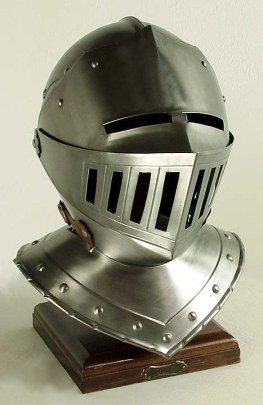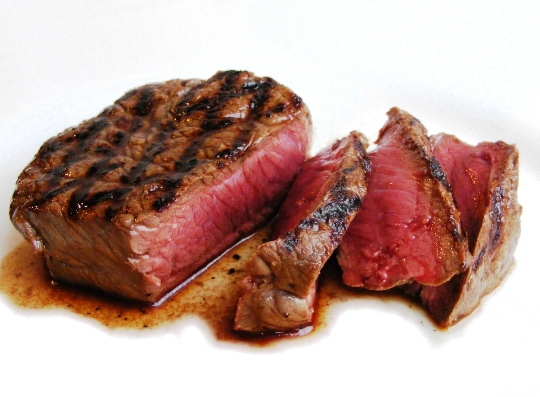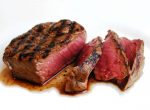Many of us have attempted to improve ourselves in our careers, in martial arts, in business, or in our finances. Often we have measurable benchmarks, such as: Can I lift more weight on this movement? Can I run faster and farther in a shorter time? Have I moved up within my organization? Am I am taking on more responsibilities and challenges in my life? Many people would argue that these are measurable benchmarks of “improvement” or “success.”
However, how can we measure something as abstract as: “Am I becoming wiser?”
I thought about the measurement of wisdom many times over the last few years, and never came to a satisfactory conclusion. One day, I was introduced to a book called “Thirty Seven: Essays On Life, Wisdom, And Masculinity.” The book was written by a modern scholar and traveler named “Quintus Curtius.”
The book spoke to me so deeply that I read the book many times, highlighting many sections and putting in numerous book marks. The book speaks to the nature of human wisdom, courage in adversity, and much much more. I then purchased more copies for my friends and family. Later, I reached out to the author to let him know how I appreciated it, and how many of the essays were being used in philosophy discussion groups.
After corresponding back and forth, I asked Quintus if he would allow me to share my favorite essay, “The March of Worldly Wisdom” with the Delta2Alpha audience. Quintus has graciously allowed us to reproduce the essay in its entirety on the Delta2Alpha blog. This essay was originally published as essay 12 in “Thirty Seven: Essays on Life, Wisdom, And Masculinity.”
You can find more of the authors work at:
http://www.qcurtius.com
You can buy his books on Amazon at:
Thirty Seven: Essays On Life, Wisdom, And Masculinity
http://www.amazon.com/Thirty-Seven-Essays-Wisdom-Masculinity-ebook/dp/B00NCLWQQ0
Pantheon: Adventures in History Biography and the Mind
http://www.amazon.com/Pantheon-Adventures-History-Biography-Mind/dp/1511496045/ref=tmm_pap_swatch_0?_encoding=UTF8&qid=&sr=
We seek self-improvement in many areas: in physical fitness, language proficiency, travel, professional advancement, and in growth of character and worldly wisdom. Our premise is that development in all these areas makes us better and more successful men. It is relatively simple to measure our progress in the first five areas just listed. They are readily quantifiable fields of endeavor. Years ago, when I wanted to maximize my score on the Marine Corps physical fitness test, for example, I would work towards running three miles in eighteen minutes, doing eighty sit-ups in two minutes, and doing twenty pull-ups.
But how is it possible to “measure” our progress in developing character and wisdom? Is there any meaningful metric that can be used? The question is an important one. Without some method of regular self-examination, we will inevitably make things easier on ourselves. We will slide into complacency; advancement will come to a halt. We will become like the weight-lifter whose progress has reached a plateau, and then just fizzles out. There are some signs that can be used as indicators of progress in worldly wisdom. If you are aware of what they are, you will be more likely to notice them. As you continue your humanistic studies, and (more importantly) the flesh-and-blood school of hard knocks, you will begin to notice one or more of the following signs of maturing wisdom.
You are making regular contributions and additions to your philosophy of life. Wisdom accretes slowly, like mineral formations building in a cave from the steady dripping of water. As the poet Hesiod says in Works and Days (361-362): “If to a little you keep adding a little, and do so frequently, it will soon be a lot.” You build your house of wisdom slowly, one timber and one shingle at a time.
You begin to notice connections between things (ideas, places, personalities, emotions, etc.) previously not perceived. Increasing wisdom and virtue opens doors of perception that were previously closed. Ultimately, all physical beings are connected in one way or another. The ability to perceive this, and to look beyond the façade of everyday life, is a sign of maturing wisdom.
You begin to lose enthusiasm for being around people without ambition or purpose. Abandoning people or things that add no value to your life is an important step in forward progress. Keeping company with dullards, fools, and dissolute people will bring you to ruin sooner or later.
Depressions of the mind or spirit become less frequent and more tolerable. The philosopher Plotinus, seeing that his pupil Porphyry was suffering from extreme depression, encouraged him to take an extended vacation in Sicily. The change in routine did him wonders, and accelerated his forward progress in Neoplatonism.
You are less and less disturbed by the foolishness, absurdities, and cruelties of the world. A major sign of progress is to maintain one’s calm in the presence of the avalanche of nonsense which the world throws at us. I confess I need more improvement in this area.
Your style of discourse (in speaking and writing) begins to change. Refinement will inevitably become a feature of your discourse. As the gem becomes more polished and cut, it gleams more brightly.
You begin to lose your inflexibility in holding on to your cherished beliefs. What we once saw as doctrine, we begin to see as only one perspective. Certainty is the mark of a closed mind, and is murderous.
You no longer feel the need to convince or convert people to your position. People will arrive at the truth in their own time, and on the backs of their own horses. Losing an argument or debate with another man will mean nothing to you. Aristippus, after being verbally lashed by another man, said “I who have been beaten in an argument will have a better night’s sleep than my victor.”
You become less governed by your passions, and more governed by reflection and reason. Unformed spirits are slaves to their fear, greed, envy, and rage. As a man makes progress in acquiring wisdom, he shifts his focus from the baser passions to the milder, less serious ones. Advancement of wisdom takes the edge off the destructive passions. One example will illustrate this. Two of Renaissance Italy’s most brilliant lights, Poggio Bracciolini and Lorenzo Valla, allowed themselves to be drawn into a bitter and extended quarrel. It was fought in the open, with all the acrimony which their powerful pens could muster. Another humanist, Francesco Filelfo, wrote to both of them, pleading them to cease and desist from their literary brawls. It is a masterful letter, and contained some pearls of wisdom:
We are accustomed sometimes to desert our senses and follow the perturbations of our spirit; we do this type of thing when we are deceived by persuasion of others, who either hate us secretly or are desirous of revenge; they put out stimulations to insanity, which bring us to the most vehement agitation, so that we go against all human and divine directives, not thinking of our own dignity, but looking to do contumely and evil things against others…And what injury is it which forces you to such madness? It is enough that he who lies is unbalanced. This truly is the nature of a perturbed soul (with the violence, impetuosity, and the rage) that it cannot moderate itself…So he who is deprived of the light of reason, as long as he lacks this, he neither understands anything clearly, nor rightly is able to judge.
[27]
You become more focused on action, and less focused on excuses. The wise man knows that nothing in this world is attained without effort and struggle. He spends less time in fantasy, and more time in execution.
You begin to seek out other wise men and value their company. As Plutarch says, “And a young man improving in character instinctively loves nothing better than to take pride and pleasure in the company of good and noble men…” This is true not only of young men, but of men of all ages. The good seek out the good, and the wise seek out the wise.
You become more focused on attending to details. Carelessness and frivolity are feminine traits. The wise man, who seeks progress through study of philosophy, will begin to realize that this world is a serious place, requiring a certain sense of sobriety and application. The responsibilities of life should be embraced, not shirked.
You begin to see the unity of all things, and the love of this unity growing within you. As the philosopher and theologian Nicolas of Cusa says,
Beauty of soul comes through love in devotion, and this that it is resolved in tears. It is like a fire that is applied to living wood, which burns one part while smoldering in another. And thus so it happens to a cold soul…Therefore, love is the cause of order, and when it comes to an end, order does too.
[28]
You become more and more drawn to the study of philosophy. If you care about the world and about yourself, then you care about philosophy. Its study will raise you to heights undreamed of. As the Roman writer Valerius Maximus says, in a brilliant aside in his Memorable Doings and Sayings (III.3):
There is a powerful and steady militia of the spirit, influential through the written word, priestess of the timeless precepts of scholarship: philosophy. Who has received it in his heart, it drives off every useless and unbecoming affectation, confirms its edifice of solid virtue, and makes itself more powerful than fear and pain.
In the end, our powers of analysis can only do so much. There is an inescapable balance in life. The more difficult a goal is to achieve, the more worthwhile it will be. Acquiring worldly wisdom is the most difficult of all. You will mostly feel lost, bewildered, and confused. You will often feel like abandoning the pursuit altogether. But even in these moments, remember that you are progressing, even if you believe you are not. Watch for the signposts on the road, as I have listed them above, and continue on your journey. Allow others to help you. As the great Lorenzo Valla said, “To take pleasure in the success of the good and the wise falls only to him who is good and a lover of wisdom; this type of man, like all precious things, is rare and limited in number.”
[29]
You do not feel compelled to do things you do not wish to do. The developing mind will feel anguish at being forced to do things he does not want to do. He will feel anger or rage. Anger, properly understood, is essentially a form of pain; it is pain resulting from the inability to achieve one’s ends. If we cannot change our environment, we can at least change ourselves. Through discipline and reflection, we can find a way to suture our own festering wounds, to salve our own burns, to alleviate the sting of painful knowledge with the blessings of consolation and guidance.
It is not good to say that someone else controls your emotional state. No one can “make” you behave one way or another. Thinking in this way empowers the other person, and renders the thinker helpless. And you are not helpless: no one can do anything to you that you do not permit them to do. Your identity is not conditioned on the approval of another. When you see someone behaving in an arrogant, haughty manner, think of this teaching anecdote by the Roman fabulist Phaedrus (IV.15):
By the grace of Jupiter, the she-goats were able to obtain beards, just like the male goats. At this, the he-goats were full of indignation, afraid that the females would rival them in prestige and dignity. “Tolerate them,” said the God, “and let them enjoy their empty honors and badges of your rank. It signifies nothing, as long as they do not equal you in masculine virtue.”
As long as we remain centered in our masculine core, the unnatural behavior of another person should not be our concern. Our purpose is to seek a philosophy of life, a way of thinking, that will enable us to be lit by an inner light, a light that will guide us in this hostile modern environment; a philosophy that will enable us to draw sustenance and strength from ourselves, rather than from the approval of others. We travelers have spent a great deal of energy and effort to travel abroad. We travel here, and we travel there. But what about the inner journey? This is a profounder type of travel, one that will enable us to advance to ever-higher levels of consciousness, until we begin to approach true illumination. These are the journeys of the great mystics and poets of the past.
The mystic poet Farid ad-Din Attar (c. 1145-1220) in his great work Discourse of the Birds, believed that a sincere seeker could undertake a spiritual journey through six “valleys” or levels: Searching, Love, Knowledge, Detachment (from personal desires), Union (where he sees that all things are one), and Astonishment (losing sense of individual existence). Eventually, with persistence, he might be able to achieve the ultimate stage, Annihilation (of the self in the Divine). By going through these stages, Attar held, a seeker could become a “Perfect Man” who had the power of direct communion with the Divine. No soul is fully happy, says the pantheistic Attar, until it loses itself in this World Soul which emanates from the Divine. The only real religion was the search for such a union. Although Attar was severely attacked for his ideas, he confounded his critics by living a long and happy life.
Happier still was Saadi of Shiraz (c. 1184-1283), perhaps Persia’s most beloved poet. For nearly thirty years he traveled all over the Near East and North Africa, experiencing all degrees of deprivation and poverty. He once complained that his shoes were in tatters, until he met a man without feet, and so “thanked Providence for the bounty.” He fought in the Crusades, was captured by the Franks, released on ransom, and fell into a new kind of slavery after marrying the daughter of his ransomer. Eventually ridding himself of this servitude, he retired at age fifty to a small house in Shiraz, where he wrote poetry extolling the virtues of a simple life, animated by the sensual pleasures of physical love. The mystics were always careful to teach that the things of this world were illusory and fickle. To pursue them too rashly was to subject ourselves to inner torment and turbulence. Ibn Arabi (c. 1165-1240) brought this idea to its fullest and most elaborate expression in his many esoteric volumes of prose and poetry. What the great mystics had in common was: a wide experience of travel, constant writing, a belief in their own inner light, spiritual exercises to achieve a level of enlightenment, a sense of humor, and a healthy enjoyment of worldly pleasure tempered with a knowledge that all such things were fleeting. We would do well to learn from them. The growth of wisdom involves a recognition that we should not feel bound to accept the expectations, limitations, and projections of others.
The poetry of Al-Mutamid (c. 1040-1095), Emir of Seville, is perhaps the last word on the folly of chasing the phantoms of the world. He led a life of combat, fighting at times both Christians and Moslems in Spain, yet never stopped writing verses. Eventually captured, he was brought in chains to Tangier where he lived until his death. One of his last poems expresses in a few lines what only long experience and true wisdom can ever hope to know:Do not woo the world too rashly, for behold,
Beneath the painted silk and broidering,
It is a faithless and inconstant thing.
Listen to me, Mutamid, growing old.
And we—that dreamed youth’s blade would
never rust,
Who wished wells from the mirage, roses
from the sand—
Shall understand the riddle of the world,
And put on wisdom with the robe of dust.
[30]
[27] Letter to Poggio and Valla, 1453. See Cook, B. (ed.), Lorenzo Valla: Correspondence. Cambridge: Harvard University Press, 2013, p. 266-267.
[28]Izbicki, Thomas (ed.), Nicolas of Cusa: Writings on Church and Reform. Cambridge: Harvard University Press, 2008, p. 473.
[29] Letter to Cardinal Tommaso Parentucelli, 1446. Cf. Cook, supra at 207.
[30] Quoted in Durant, Will, The Age of Faith, New York: Simon and Schuster, 1950, p. 307, and adapted from Mark Van Doren’s Anthology of World Poetry.




